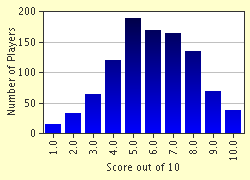Quiz Answer Key and Fun Facts
1. The red "Phrygian bonnet" has become one of the symbols of France. It was first seen during the revolutionary period in 1789 on. Why?
2. Why were the revolutionaries called "sans-culottes"?
3. The female embodiment of France, complete with her Phrygian bonnet, was popularised during the revolutionary days too. She was discarded during the Napoleonic era only to be brought back. She now graces the town halls, squares and stamps of France, even the Euro coins show her image. The model in recent days has been Brigitte Bardot, Catherine Deneuve and Laetitia Casta. What is the image's name?
4. The 14th of July has been France's official national holiday since 1880. Why was the fourteenth so significant amongst the revolutionary dates the later government might have chosen?
5. No quiz on the subject of the French revolution would be complete without a mention of the gruesome symbol, the guillotine. Which of the following is NOT true?
6. The famous oath sworn at the "jeu de paume" in Versailles was not to leave until the Tiers-Etat formed a constitution. Why is it called this?
7. Which of the following statements is NOT true about one of the most popular symbols of France, the rooster or "coq gaulois"?
8. During the early revolutionary period, a movement to "de-christianize" France came about, to take them out from under the clergy's power and adopt a more republican style religion. Which of the following were NOT actually measures taken to rid the country of Christian symbols and observances?
9. Charlotte Corday is known for her assassination of Jean-Paul Marat in his bathtub on July 13th 1793. Why did she do this?
10. Why is the French national anthem called the "Marseillaise"? When it was written by Rouget-de-l'Isle in 1792 in Strasbourg the title was "Song of the Army of the Rhine"?
Source: Author
Bruyere
This quiz was reviewed by FunTrivia editor
bloomsby before going online.
Any errors found in FunTrivia content are routinely corrected through our feedback system.
